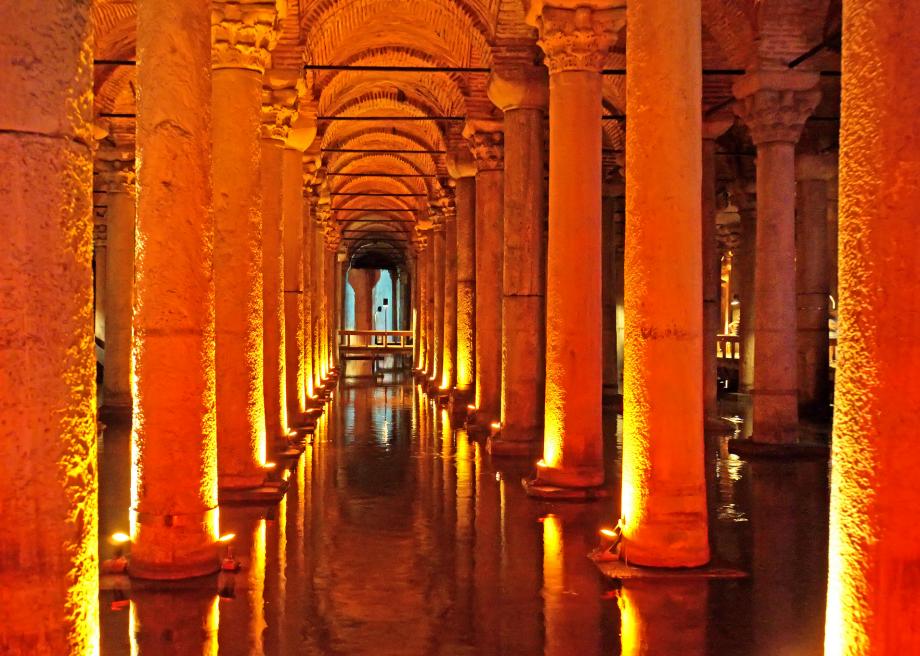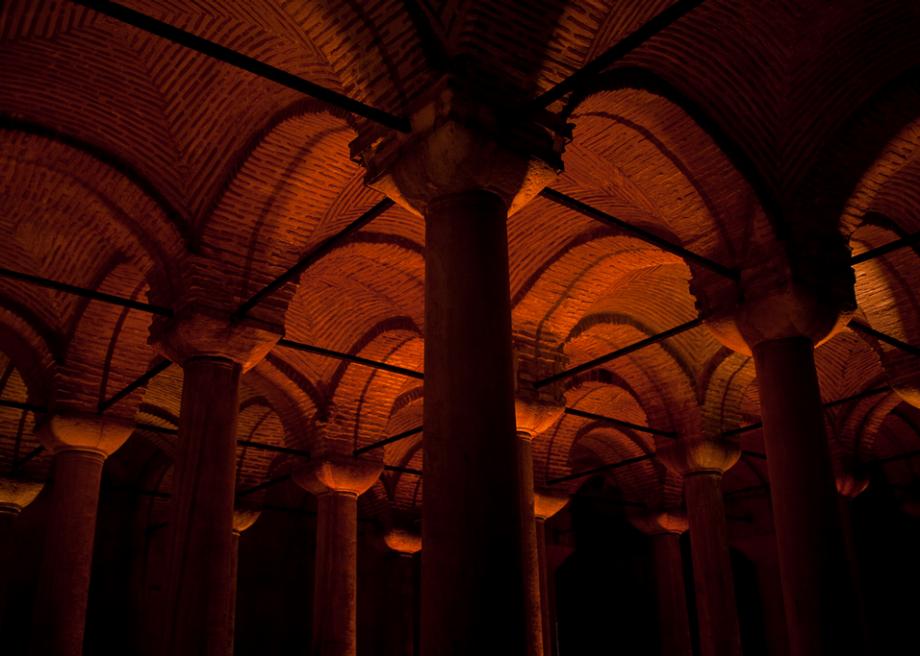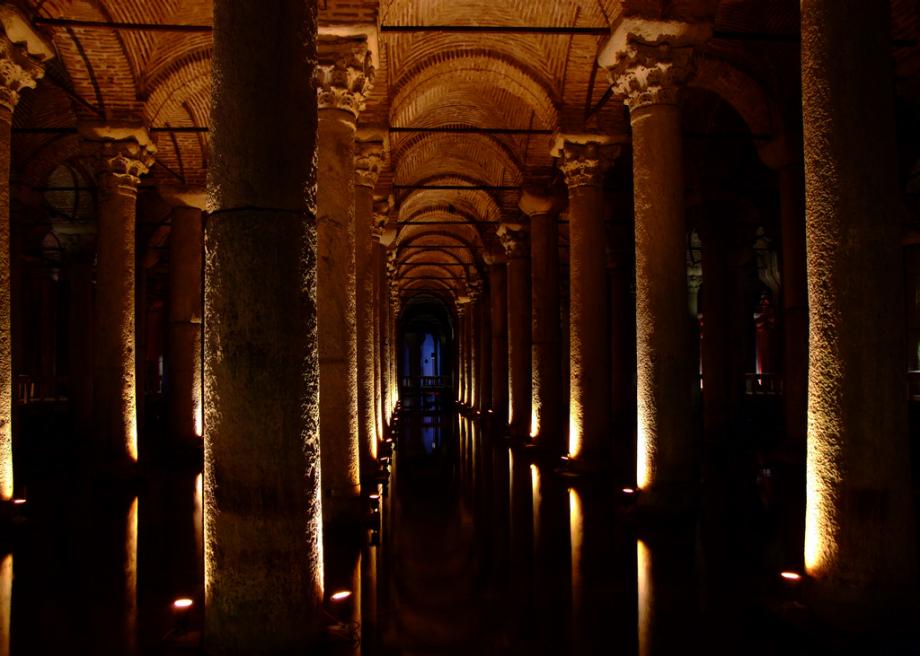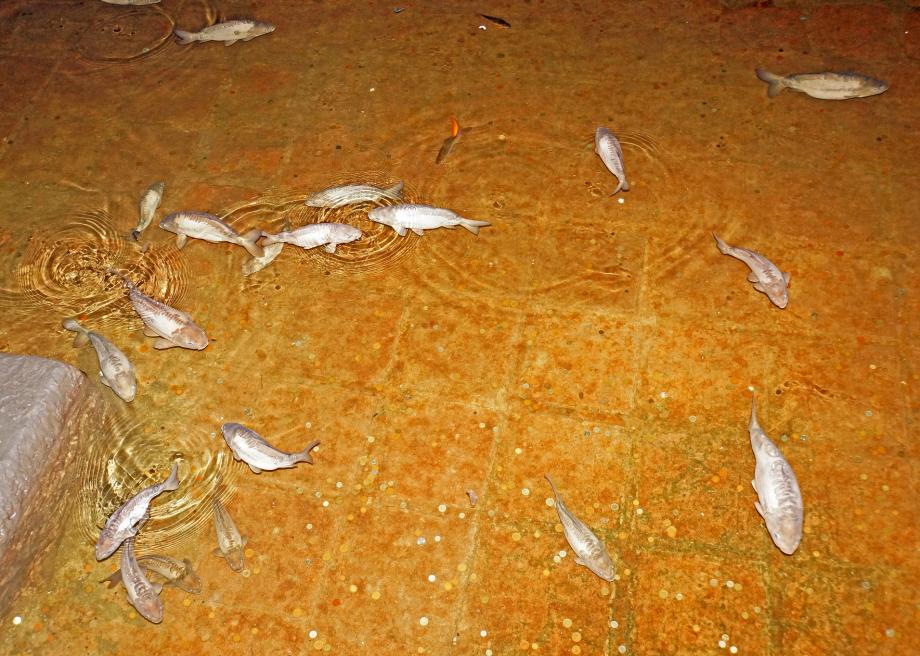Inside the Ancient Underground Cisterns of Istanbul
Atlas Obscura on Slate is a blog about the world’s hidden wonders. Like us on Facebook and Tumblr, or follow us on Twitter.
A Frenchman visiting Constantinople in the 16th century heard strange stories of locals drawing up fresh water and even fishing from holes in their cellars. Intrigued by these stories and the legends of great underground temples, he decided to explore.
Upon further investigation, he rediscovered a subterranean marvel, the largest of the long-forgotten palatial cisterns of the Byzantine Empire. Fish swam in an artificial freshwater lake the size of two football fields, and the vaulted brick ceilings were held up by 336 30-foot pillars scavenged from nearby Roman ruins.
Amazingly preserved despite centuries of conflict and siege, the cistern was built in 532 AD by the Byzantine Emperor Justinian I to store fresh water for the palace and nearby buildings. Nicknamed Yerebatan Sarayi, or “the Sunken Palace” in Turkish, it is known in English as the Basilica Cistern because of its location on the site of an ancient basilica.
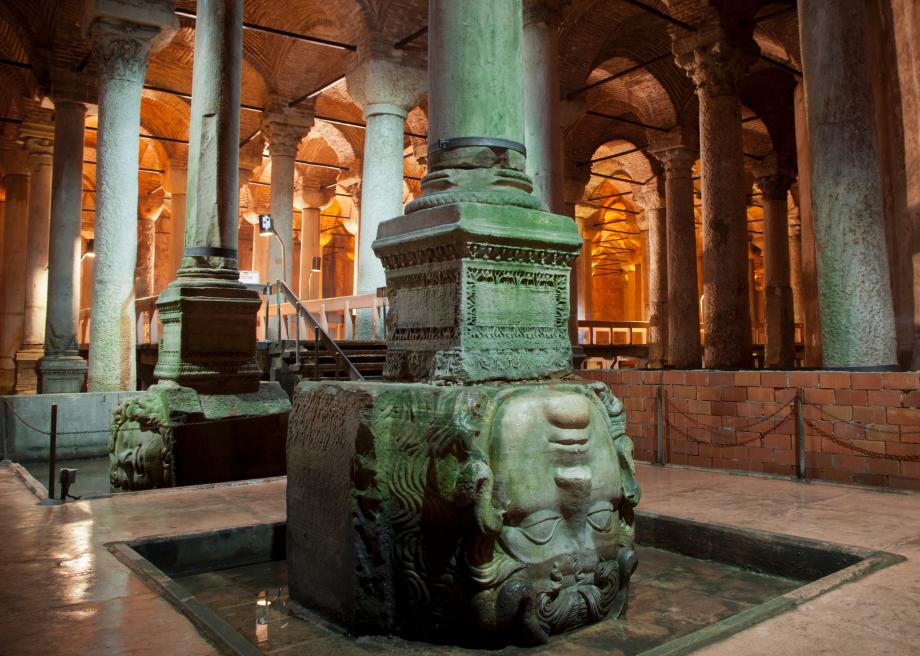
Photo: Dan Kitwood/Getty Images
When Justinian undertook the building of the cistern, Constantinople was still in the shadow of the devastating Nika Revolt, which took place in January of that year. The Byzantine equivalent of soccer riots gone massively out of control, the revolt took place in the wake of a hotly contested chariot race and culminated in the burning of much of the imperial city, and the killing of 30,000 rioters by Justinian’s troops. The cisterns were built as part of the rebuilding efforts in the aftermath.
In the past, visitors could rent a rowboat to float past the columns in the dripping gloom. Restorations in the late 1980s dredged the silted-in floor and added lighting, elevated walkways, and a cafe for visitors. There are still fish in the now-shallow water, helping to keep the water clear.
The two giant Gorgon-head pillar bases at the far end of the cistern are an intriguing mystery. It is suspected that they may have been pulled out of an older pagan temple, where motifs of the famous Gorgon Medusa were used as a protective emblem. It is possible that the placement of these two faces—upside-down and sideways, at the base of pillars—may have been a deliberate display of the power of the new Christian Empire. Or it’s possible that the stones were just the right size.
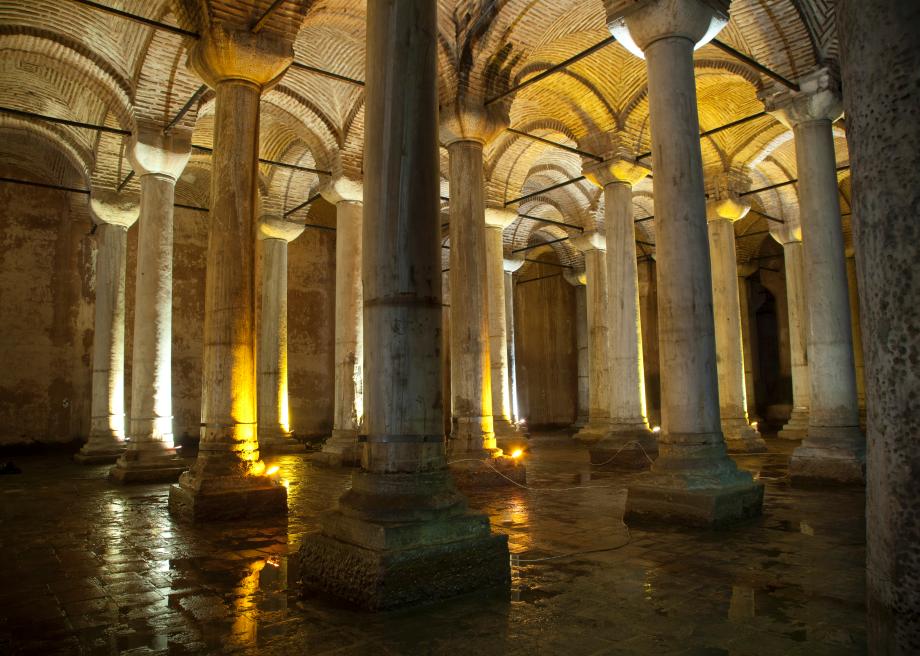
Photo: Dan Kitwood/Getty Images
Other watery wonders around the world:

